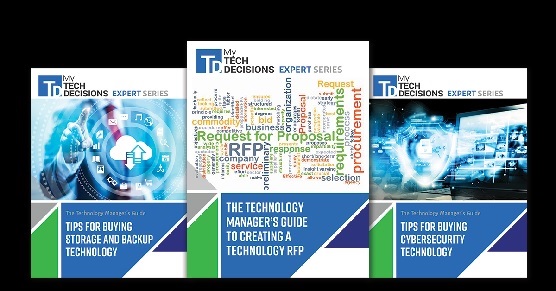When it comes to learning, college students still apply the first lessons they mastered in preschool: sharing.
But learning and sharing strategies have changed since today’s college kids were little tikes, especially with the plethora of collaborative solutions technology has to offer.
Collaborative learning is a fast-rising trend among colleges, especially with options like long distance learning, online classes and BYOD. According to Marci Powell, the global director for education and training at Polycom, collaboration is a necessity for colleges to stay in the running to gain the interest of prospective students.
“In the old days, collaboration was nice to have,” she says, “Nowadays, it’s a must-have.”
Powell says that multiple universities are bringing visual collaboration to the forefront.
“The technology used to be expensive,” she says. “But, the technology got better through the years, and is less expensive.”
Powell says that Polycom is improving the security and quality of collaborative solutions, such as the immersive telepresence room for distance learning.
Immersive telepresence classrooms are found in colleges like Stanford University. These rooms, once designed and customized to the college’s needs, provides solutions such as touch screen monitors so students can share content and annotate over the professor’s notes.
Powell said one professor was able to design his room in a horseshoe shape, so that the classroom located in China was located on his left, his classroom in America was located on his right, and his own image appeared in the middle.
“It doesn’t matter if you’re in the same room or location,” she says. “The devices put us in a team huddle. We can still visually see each other and still learn and work together.”
Edward Adams, the chief technology officer and director of computing services at the Ross School of Business at the University of Michigan, says students have a custom program for their distance learning program that feels like a reality show.
“We’ll have forty-five students in a class, along with executives from all over the world being followed by videographers,” Adams says. “The videographers are focused on an instructor working on a white board or interacting with students, and catch those interactions on film.
“It’s not a general webinar,” he says. “It gives participants more of a real presentation.”
According to Powell, another type of trending collaboration includes the “flipped” classroom design. A flipped classroom occurs when students hears/watches a lecture outside of class, and works hands-on with what they’ve learned from those lectures during class time.
Powell also said that students can use devices like such as smartphones to go out into the field for research, and send their data back to the university.
“Universities can even send data to other universities,” she said. “Universities can collaborate.”
In order for a college to collaborate with its students or branch out to other schools, the right software is needed.
Mersive, provider of display management and collaboration software, is implementing its Solstice software into colleges’ networks.
A quick look into how the Solstice software works
Solstice – Software to create your Pixel Landscape® from Mersive on Vimeo.
Once the software is installed, students and professors can simultaneously connect, display, share and control content from any device they bring to class. The Solstice software also immediately connects students and professors entering a Solstice-driven area, and will have the ability to control and share content for instant collaboration.
Christopher Jaynes, CTO of Mersive, says that collaborative software like Solstice makes lessons and classwork move quickly, while also reducing professors’ stress.
“This software enables shared displays,” he says. “We’re able to get rid of working one on one and do it elegantly without getting in the way of a lecture.”
Plus, Solstice is easy to use.
“No training is required,” he says. “Any professor can use it.”
Be Aware:
While collaborative solutions are becoming more popular, cheaper and easier to manipulate, new challenges are brought forward.
Bill McIntosh, the president of Synergy Media Group, says that money can still be an issue.
“As the budget for [technology like] video conferencing technology is decreasing, everyone can afford simpler solutions,” he said. “But they can be stale and out of date. When you have fifty people in a class, need you need that interaction and personalization. That can get expensive.”
According to McIntosh, some universities need to invest in topnotch collaborative technology to just stay afloat.
“In my opinion, I think we will see the same tier of universities, like the Ivy League schools, to be always in demand because they offer good financial return on students,” he says. “But there will be a thinning of the herd.
“Middle tier schools, like state school need to start investing in programs such as online classes to be the best they can be. Students want classes that look the best and are taught in the best way.” If schools don’t have opportunities like this available, then “you will probably see some institutions closing in the next twenty to thirty years.”
McIntosh also says that collaborative programs like online distance learning will face problems regarding content ownership.
“If a professor is recording a lecture, then who owns the content?” he says. “You face questions like, can other professors use this material? Can you use this same video for next year’s class, or do you have to record a new one? Does the professor own the video, or does the college?”
McIntosh says that distance learners also face global restrictions, especially if their online class is set in another country.
“If students are taking a class in a communist country such as China, then the government owns the internet,” he says. “They can control the internet and shut it down.”
Shopping Tips for Collaborative Solutions:
Before a college gives the green light to purchase collaborative technology there is a checklist to consider.
Marci Powell says that universities need put all their problems and options on the table, and pick solutions that will work together well.
“You need to consider all the things you want to do,” she says. “You don’t want to pigeonhole in one solution, or get technologies that don’t work together. Be aware of proprietary software or hardware. You don’t want to be limited, you want interoperability, which is key.
“You want to make the technology disappear in students’ minds, and make everything work together and naturally.”
Powel says that colleges need to think about the departments beyond IT.
“What about Student Services, or Academic Services?” she says. “What about those long distance students who need access to mentors on campus?”
Finally, Powell says that universities need to use their collaborative solutions to catch the eye of prospective students, and establish a recognizable brand.
“You have to stand out in this market,” she says. “Students are going to go where the technology opportunities are great, where they will be prepared for the work place, learn applied skills and where there is blended learning.”
Edward Adams says that investing in collaborative technologies like video-based learning is a big chunk of students’ expectations in what colleges provide nowadays.
“It’s what students want,” he says.
If you enjoyed this article and want to receive more valuable industry content like this, click here to sign up for our digital newsletters!










Leave a Reply